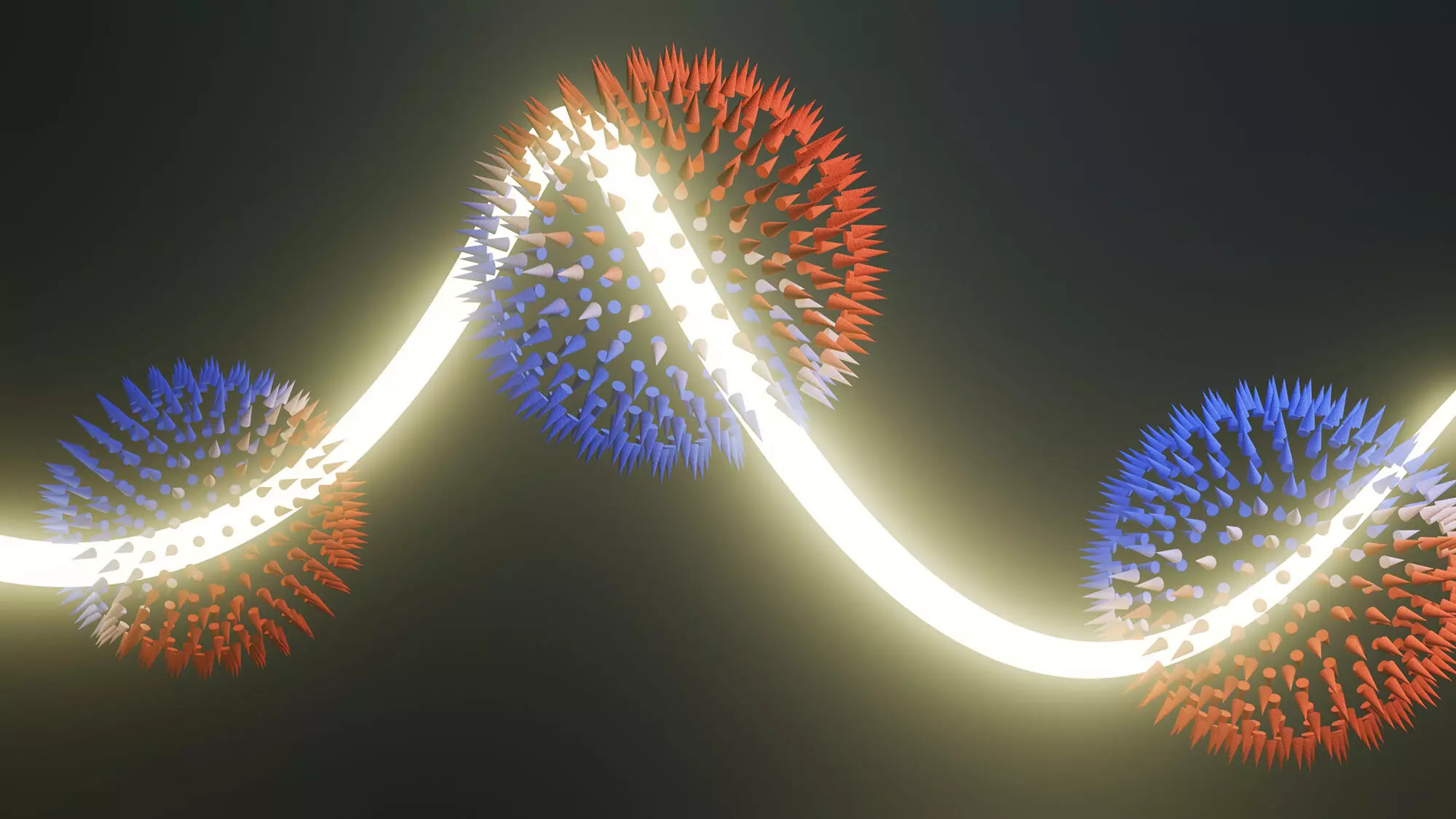The field of electronics has significantly advanced over the past century, yet the quest for energy-efficient alternatives is more vital now than ever due to mounting environmental concerns. One of the most promising avenues in this pursuit is orbitronics, where the orbital angular momentum (OAM) of electrons may play a key role in the future of information transfer. As researchers delve further into this uncharted territory, the discovery of orbital angular momentum monopoles marks a significant milestone, demonstrating both theoretical prowess and experimental ingenuity.
Traditionally, electronic devices have relied heavily on the charge of electrons for data transmission. However, with the shift towards more sustainable technologies, there is a growing interest in leveraging other intrinsic properties of electrons. Among these properties, the spin of an electron has received considerable attention, leading to the development of spintronics—a field that utilizes the spin state of electrons for information transfer.
However, the potential of orbital angular momentum as a resource for orbitronics is now being recognized. OAM refers to the rotational motion of electrons as they orbit the atomic nucleus, conceiving new ways to transmit and process information. The research surrounding OAM is not only innovative but also aligns with the needs of modern energy policies.
A significant breakthrough in this domain has come from an international collaboration led by scientists from the Paul Scherrer Institute (PSI) and Max Planck Institutes in Germany. Their collective research indicated that chiral topological semi-metals, a class of materials known for their unique atomic structure, could serve as an effective medium for generating OAM. These materials exhibit a helical arrangement, reminiscent of a DNA double helix, which bestows them with an intrinsic handedness—a feature that may facilitate the natural flow of OAM without the need for external stimuli.
This intrinsic property represents a significant advantage over conventional materials like titanium, where external conditions are often necessary to initiate OAM textures. Such advancements could open the doors to developing more stable and efficient devices capable of processing information with minimal energy expenditure.
Among various OAM configurations, researchers have a particular fascination with OAM monopoles. These unique structures allow OAM to radiate uniformly outward from a central point, akin to spikes protruding from a hedgehog—a trait that enhances the versatility of flow directionality. The isotropic nature of OAM monopoles suggests that they could revolutionize how information is processed, allowing for greater flexibility in device design.
Prior to the recent study, the existence of OAM monopoles had remained theoretical, with scientists struggling to connect experimental evidence to theoretical predictions. The gap between theory and experiment had thwarted attempts to observe these monopoles despite researchers gathering vast amounts of data.
The collaborative research team employed a sophisticated approach to overcome previous limitations, utilizing Circular Dichroism in Angle-Resolved Photoemission Spectroscopy (CD-ARPES) to investigate the electronic structures of the selected chiral topological semi-metals. However, an important revelation came to light—previous assumptions regarding the relationship between circularly polarized light and OAM were overly simplistic.
By meticulously analyzing the interplay of photon energies, the research team uncovered crucial nuances in the data that others had overlooked. Their findings clarified that the CD-ARPES signals were not directly proportional to OAM as previously believed but instead exhibited a complex rotation around monopoles. This breakthrough bridged the longstanding theoretical gap, allowing for the experimental confirmation of OAM monopoles.
In addition to confirming the existence of OAM monopoles, the research also revealed that the polarization of these monopoles could be altered by employing materials with different chirality. This discovery enhances the prospect of designing orbitronics devices that exhibit varied directional capabilities, propelling the field forward.
As this area of research gains momentum, the broader scientific community is now in a position to explore OAM textures across multiple materials, enhancing the understanding and optimization of orbitronics applications. The potential impact of these advancements extends beyond simple technological improvements; they may redefine how data is conveyed in an increasingly electronic world.
The advent of orbital angular momentum monopoles marks a pivotal point in the evolution of orbitronics, presenting exciting opportunities for innovation in energy-efficient electronics. With a foundation built on rigorous theoretical and experimental collaboration, the future of this emerging field holds the promise of both enhanced functionality and reduced environmental footprint, paving the way for more sustainable technological solutions. As research continues, the implications of OAM monopoles may soon extend far beyond the realm of physics, influencing various applications in the modern electronic landscape.


Leave a Reply